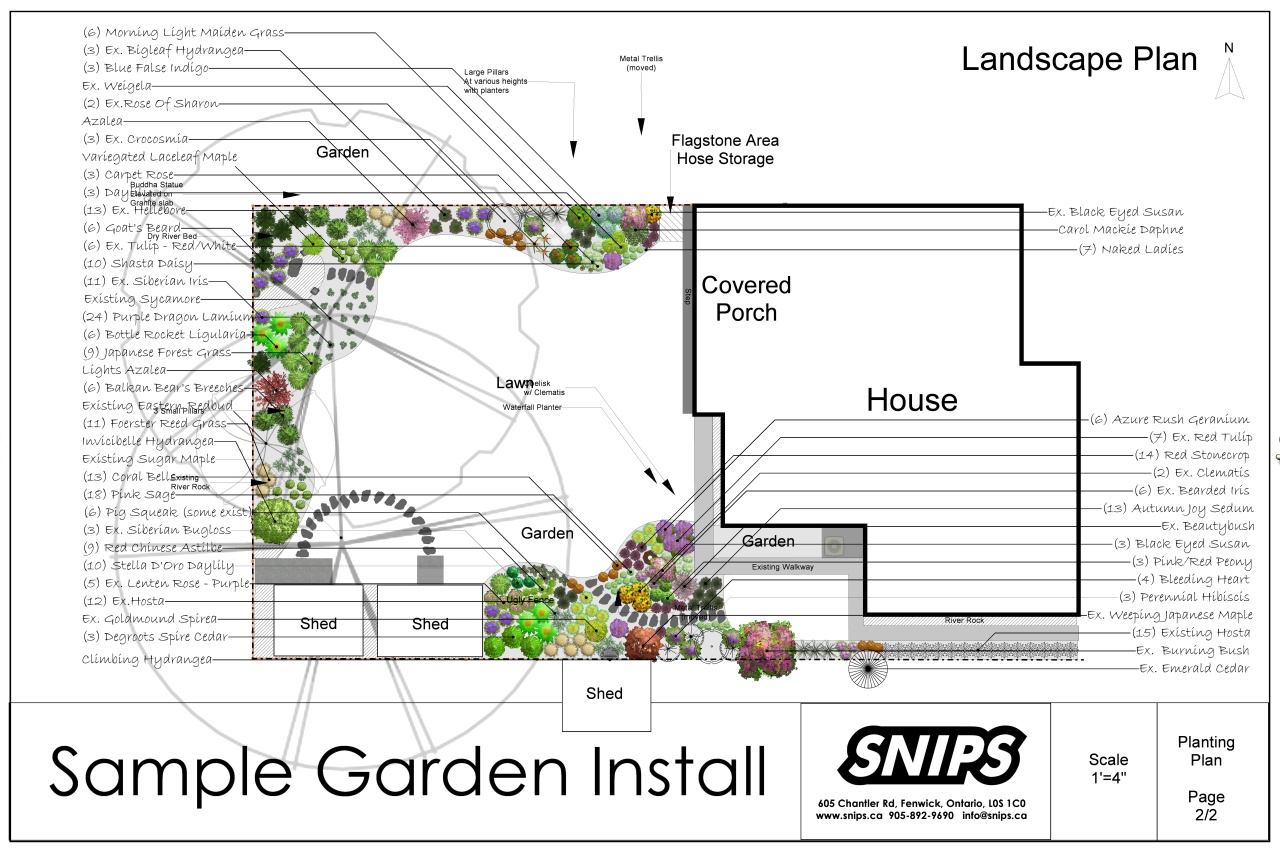Imagine your outdoor space as a blank canvas, waiting to be transformed into a beautiful and functional masterpiece. Your head is beaming with ideas! There’s just one problem – how do you get those ideas to become a reality?
This is where landscape design comes in! Landscape design plays a pivotal role in creating a well-thought-out plan for your outdoor environment.
But wait- do you really need a design before the shovel hits the ground? Here’s why we believe the answer is a hefty YES!
10 Reasons Why a Landscape Design is Important:
☼ Visual Harmony and Appeal:
Landscape design is like an artist’s sketch for your yard. It brings together elements such as plants, hardscapes, and structures in a harmonious way, creating an aesthetically pleasing and visually appealing outdoor space.
☼ Functionality and Purpose:
Just like planning the layout of rooms in your house, landscape design considers how you want to use your outdoor space. Whether it's for entertaining, gardening, or relaxation, a well-designed landscape ensures that every area serves its intended purpose.
☼ Optimizing Space:
Landscape designers are like spatial wizards. They know how to make the most of your available space, considering factors like traffic flow, focal points, and the natural features of your property. This optimization ensures that every corner of your outdoor area is utilized effectively.
☼ Plant Selection and Placement:
If you’re unfamiliar with plants, choosing the right ones for your climate, soil, and sunlight conditions can be overwhelming. Landscape design guides the selection and placement of plants, ensuring a thriving and cohesive garden that suits your preferences.
☼ Year-Round Appeal:
A well-designed landscape doesn't just look good in one season. It takes into account the changing seasons, offering visual interest and functionality throughout the year. This means your outdoor space remains vibrant and inviting in every season.
☼ Budget Optimization:
Landscape design helps you allocate your budget wisely. By planning in advance, you can prioritize key elements, preventing unnecessary expenses and ensuring that your investment aligns with your vision for the outdoor space.
☼ Increased Property Value:
Just as a well-designed interior can enhance the value of your home, a thoughtfully designed landscape contributes to the overall value of your property. It creates curb appeal, making your home more attractive to potential buyers.
☼ Ease of Maintenance:
Landscape designers consider your lifestyle and maintenance preferences. They can create a design that not only looks fantastic but is also practical and manageable in terms of ongoing care, saving you time and effort.
☼ Environmental Considerations:
If you’re interested in sustainability or attracting local wildlife, landscape design can incorporate eco-friendly elements. This may include native plants, water conservation strategies, and features that promote biodiversity.
☼ Personalization and Expression
Your outdoor space is an extension of your home and personality. Landscape design allows you to express your style, preferences, and aspirations for the space, creating a personalized oasis that reflects who you are.
In essence, landscape design is the blueprint for transforming an ordinary outdoor area into an extraordinary, functional, and visually captivating space that aligns with your lifestyle and preferences. It's the key to unlocking the full potential of your outdoor environment.
In contrast, landscape projects without a proper design can encounter various challenges and pitfalls that may lead to unsatisfactory outcomes.
10 Things That Could Happen Without a Landscape Design:
☼ Lack of Vision and Coherence:
Without a design, there's no cohesive vision for the entire landscape. This can result in disjointed elements, random plant placements, and an overall lack of visual harmony.
☼ Inefficient Space Utilization:
Without a plan, there’s a risk of inefficient use of space. Certain areas may be neglected or overemphasized, leading to an imbalance in the overall layout and functionality of the outdoor space.
☼ Planting Mistakes:
Choosing and placing plants without a design can lead to poor plant selection, improper spacing, and aesthetic inconsistencies. This may result in issues like over-crowding or gaps in the garden.
☼ Budget Mismanagement:
The absence of a design makes it challenging to prioritize elements within a budget. This can lead to overspending on certain aspects while neglecting others, potentially causing financial strain.
☼ Overlooking Practical Considerations:
A lack of design may lead to oversight in practical considerations such as drainage, sunlight exposure, and traffic flow. This oversight can result in waterlogging, inadequate light for plants, or inconvenient pathways.
☼ Limited Long-Term Planning:
Without a comprehensive design, there's a tendency to focus on immediate needs rather than considering the long-term sustainability and growth of the landscape. This may lead to the need for extensive revisions or additional projects in the future.
☼ Unsatisfactory Aesthetics:
The absence of a design often results in landscapes that lack a unified aesthetic appeal. Colors, textures, and styles may clash, diminishing the overall visual impact of the outdoor space.
☼ Ineffective Hardscape Placement:
Hardscape elements like patios, walkways, and structures need careful planning. Without a design, these features may be placed haphazardly, leading to awkward layouts or functional issues.
☼ Limited Personalization:
Homeowners may miss the opportunity to personalize their outdoor space to match their preferences and lifestyle without a design. This can result in a generic landscape that doesn't fully reflect the individuality of the property owner.
☼ Miscommunication with Contractors:
Without a design to convey specific intentions, there's a higher risk of miscommunication between homeowners and contractors. This can lead to misunderstandings, delays, and additional costs during the construction phase.
In summary, landscape projects tend to run considerably more smoothly when there is a design to refer to. A well-conceived design serves as the roadmap, guiding the entire project toward a cohesive, visually pleasing, and functional outdoor environment. Alternatively, landscape projects without a design lack the structured planning needed for a successful outcome. They are prone to aesthetic and functional inconsistencies, inefficient use of resources, and may not align with the long-term vision and practical needs of the property.
Ready to transform your space?